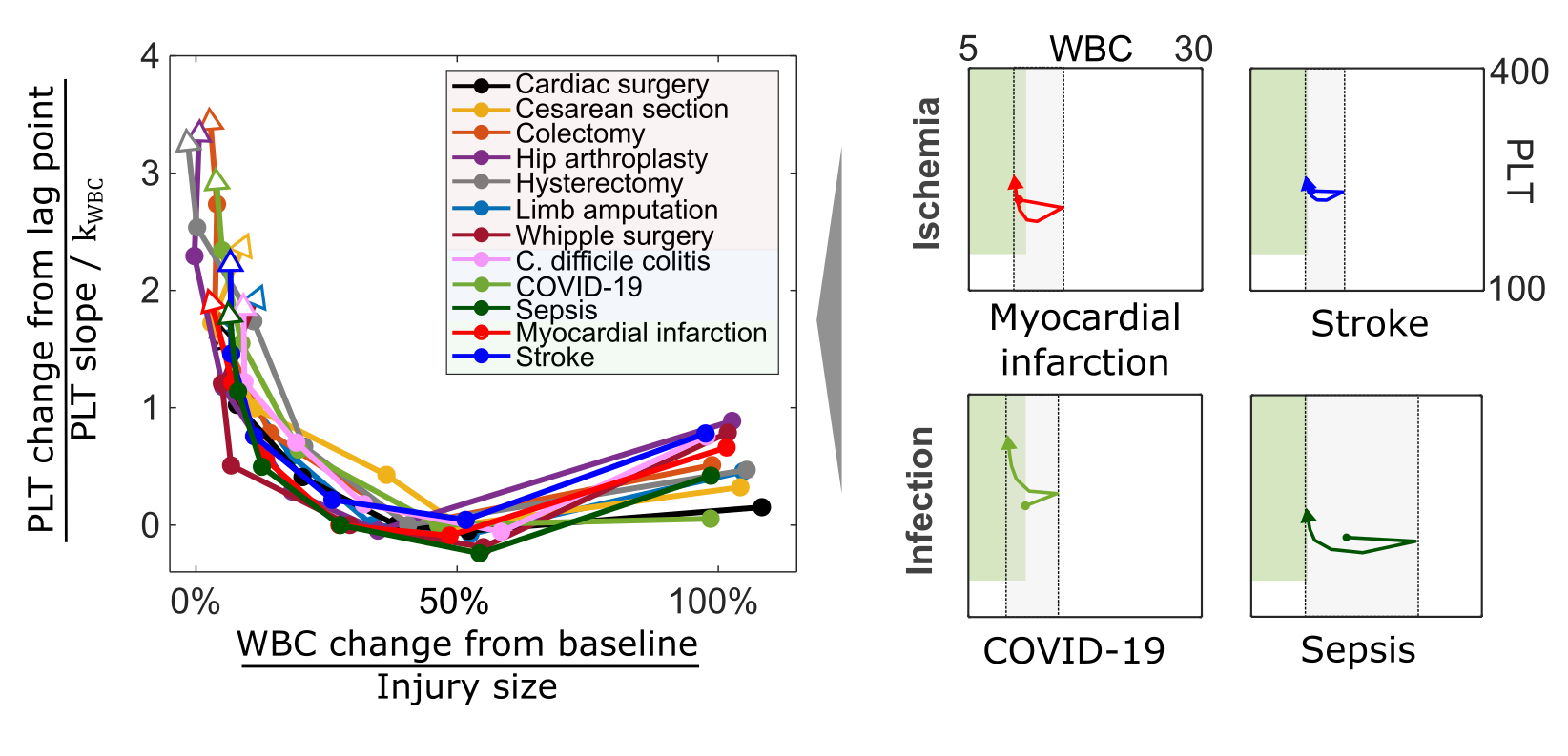Adaptive patient benchmarking
Most blood tests are benchmarked against ‘reference intervals’ derived from healthy populations. These
population-level definitions of normality ignore genetic heritability and clinical context. We develop
computational approaches to create adaptive benchmarks which are both patient- and context-specific,
helping to realize a longstanding goal of personalized medicine.
AI for clinical and anatomic pathology
Pathologists spend so much time on work that isn’t patient-facing. We build tools that can help reduce
clinical workload, and lead to more efficient and reproducible workflows. This includes developing
computer vision tools for cell analyses, predicting demand for blood product usage, and using large-language
models to augment clinical sign-outs.
Modelling biophysics of blood
Blood is a living fluid, whose dynamic properties depend on properties of the cells within it. We use
mathematical modelling to simulate the behavior of blood both as a fluid, and as a series of interacting
cell populations. Models are used to improve our understanding of various functional processes, such as
oxygen delivery, coagulation, and immunity. We use these models in highly applied settings, to capture and
predict response to acute inflammation, with an ultimate goal of informating acute care decision making.
Understanding immune dynamics following acute events
Trauma, ischemia, and infection all set off a cascade of inflammatory signaling processes as the body
recovers. We use computational tools to better understand how blood cells respond to and influence
the inflammatory environment, and how this defines recovery.
We collaborative extensively with clinicians and experimentalists to probe the immune system using
mathematical models, machine learning, clinical specimen analysis, and mouse models.



